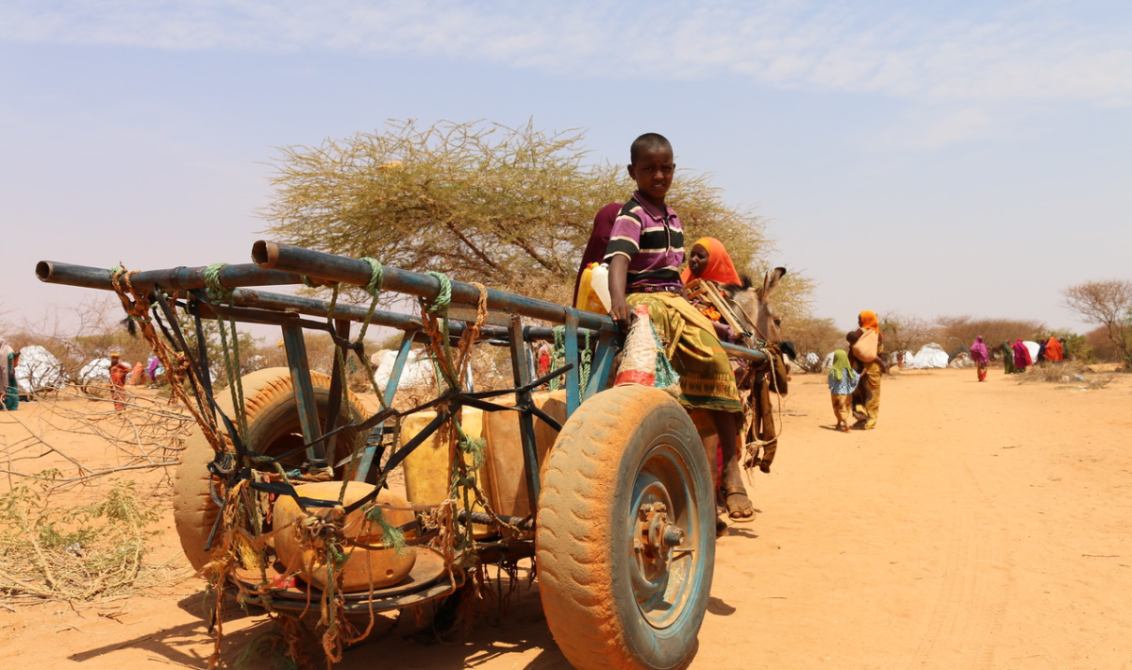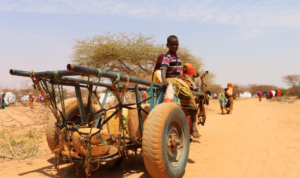Humanitarian Bulletin Somalia, January 2018


Famine risk declines, but needs remain high
Some 5.4 million people are now in need of assistance
The risk of famine has declined, with the number of people in need of assistance also reducing, according to the FAO-managed Food Security and Nutrition Analysis and Famine Early Warning Systems Network (FEWSNET). The analysis warns that humanitarian needs across the country remain critical and the gains made last year could easily be reversed, if aid is not sustained.
An estimated 5.4 million people are in need of assistance, down from 6.2 million, while the number of those in urgent need of life-saving assistance has dropped from 3.2 million to 2.7 million. Food security and nutrition have also shown some improvement across most of the 13 main settlements for internally displaced persons (IDPs). Accordingly, most of the IDP settlements are classified as Crisis (IPC Phase 3).
Historic levels of humanitarian funding, large scale and sustained famine prevention efforts and easing drought as a result of below average yet better than expected Deyr rains, helped reduce the risk of famine. However, the fragile gains could easily be reversed and nearly 500,000 people in IPC 4 (Emergency) might face a catastrophe, if aid is not sustained.
The overall median prevalence of acute malnutrition has improved from Critical (17.4 per cent GAM) in June-July 2017 to Serious (13.8 per cent GAM) in November-December. However, nearly 301,000 children under the age of 5 are acutely malnourished. They include 48,000 children with life-threatening severe malnutrition. Overall, 1.2 million children could be malnourished by the end of the year. According to nutrition surveys in November and December 2017, only eight out of 30 nutrition surveys showed Critical levels of Global Acute Malnutrition (GAM 15-30 per cent), compared to 20 out of 31 nutrition surveys conducted in June-July 2017. Areas classified as hotspots and in need of urgent nutrition and health support, include rural livelihoods in Northern Inland Pastoral and Hawd Pastoral of the northeast (Bari and Nugaal regions) and North Gedo Pastoral of Gedo Region.
As drought eases, a relative improvement in food security in many areas has been reported as has seasonal improvements to food and income sources during the Deyr (OctoberDecember) season. The 2018 Gu (April-June) rains are currently forecast to be below average with more accurate picture coming as the season approaches. Should the rains follow the current forecast, food and income sources are expected to remain below normal in most areas throughout the projection period. As a result, pasture and water availability, crop cultivation, livestock reproduction, access to agricultural employment, and water and food prices are expected to be adversely affected. Humanitarian assistance needs to be sustained to prevent deterioration of food security and nutrition and improve health outcomes.
